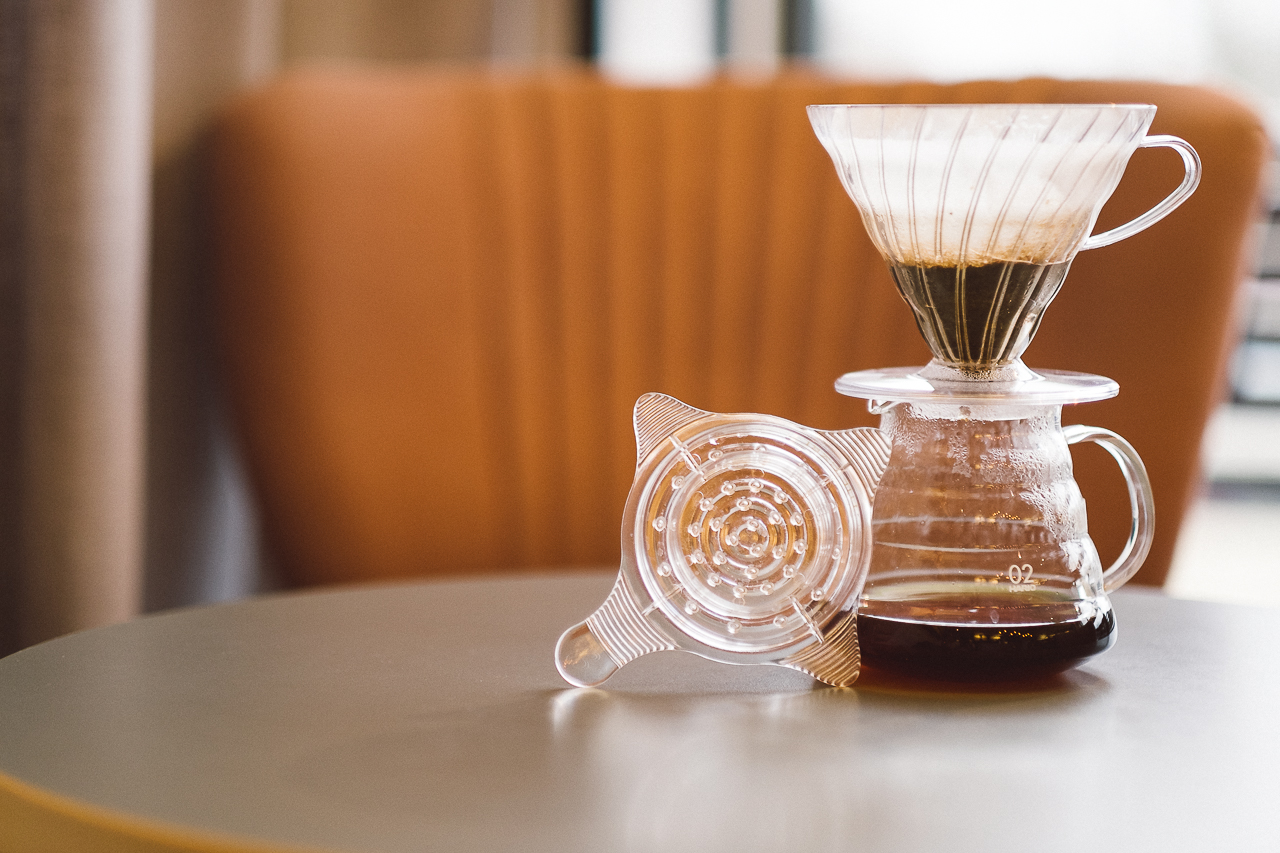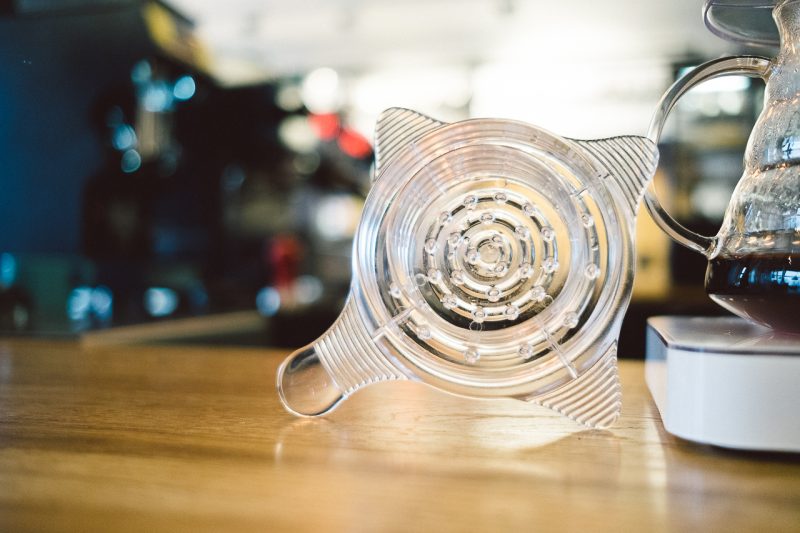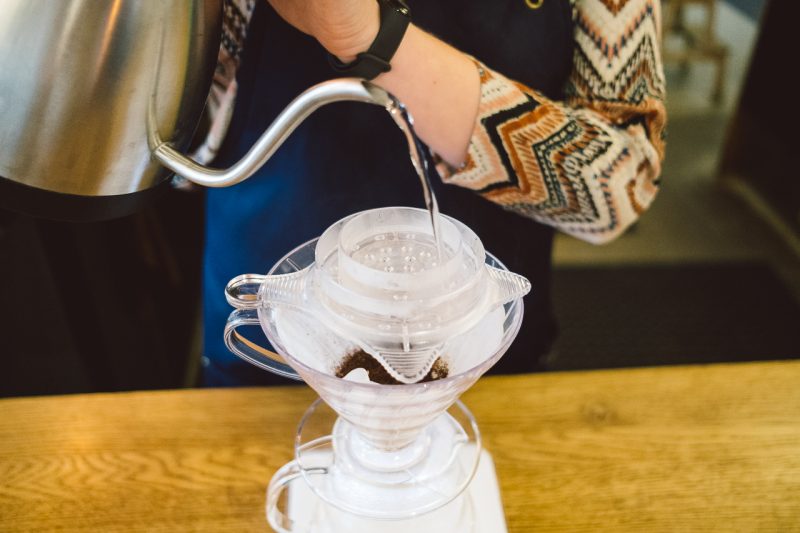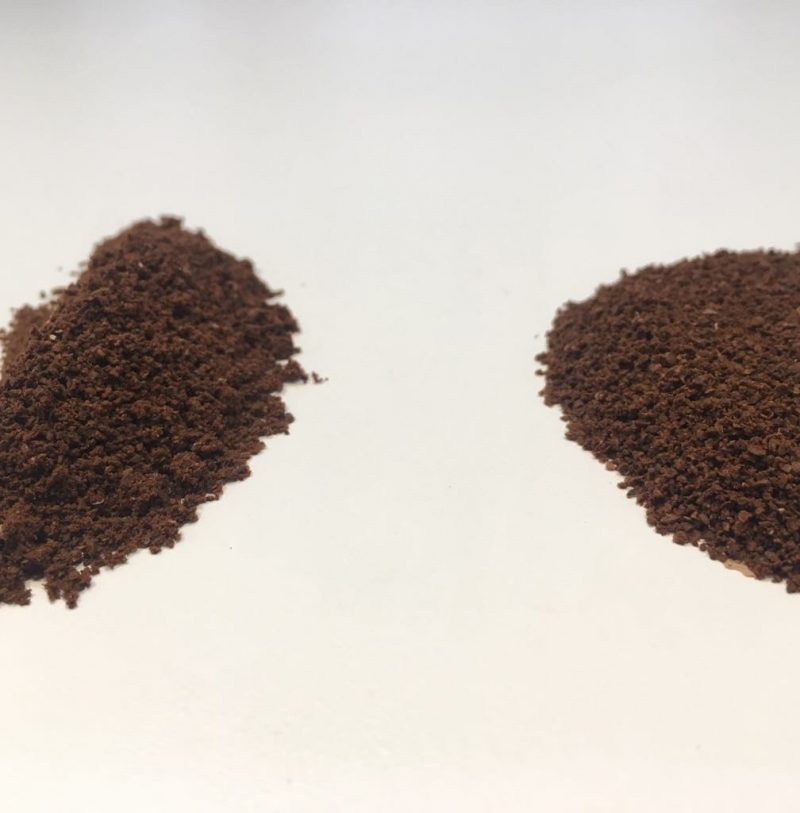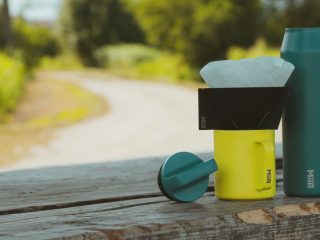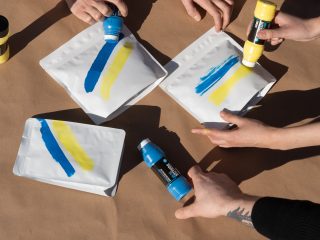In addition to a plan A you should always have a plan B. That was a starting point for the Koreans from the Glowbeans company, inventors of the well-known Gabi Master A coffee dripper. So what exactly is Gabi Master B, a younger sibling to the device which has recently become so popular?
The Gabi Master B is not a dripper. It is an accessory for pour-over brewing that you put on top of a coffee dripper. Basically, any dripper.
Design and specifications
The way the accessory works is simple and similar to the Gabi A’s. The Gabi Master B acts like a shower head in an automatic brewer, evenly dispersing water. It is made up of two reservoirs: a narrower and a wider one. Thanks to that innovative solution you can use the accessory with smaller coffee drippers like Hario V60 01. The wider reservoir you can use with some bigger ones, like Chemex (apart from its biggest coffee dripper holding 10 coffee cups, a real hulk) or Hario V60 03.
The Gabi Master B is made of Tritan plastic (sounds like a name from a Vonnegut’s book, right?), safe material used in food contact products. Its shower head has 33 evenly distributed holes. The first reservoir (with 21 holes) can hold up to 70 mililiters of water. The second reservoir matches the first one in volume, but has 12 additional holes.
Brewing
I tested the Gabi B mainly with a Hario V60 02. I was going to use 250 mililiters of water to 15-16 grams of coffee.
Conclusion no. 1: for a dripper this size, the best results were achieved using the narrower reservoir only. The wider one made the water hit the sides of the brewer, which is probably why the quality of the brew was poorer.
Conclusion no. 2: bloom. It is good to do it manually, pouring water directly onto your coffee and mixing it evenly with a spoon or a stick. The next step is using the Gabi Master. The brews done without a manual bloom were less saturated and consequently blander.
Conclusion no. 3: temperature. Since now there is an intermediary between the hot water and coffee, you also need to take into account the temperature loss. I know that what I am about to write is going to make some of you weak and shaky. So just sit back and relax, and take a sip of water if necessary. The solution is…. boiling water. Let me explain.
My brew was made using 250 grams of water. 40 grams were poured to bloom the coffee, then I added 70 grams of water.
After 30 seconds I added water for the first time. At 0:45 the coffee grounds reached 88 degrees centigrade.
The second time I did it, at 60 seconds, the coffee grounds were at 86 degrees when I measured the temperature 30 seconds later.
The third time I poured water was at 1:45. When I then checked the temperature at 2:00, the grounds were at 84 degrees.
These temperature variations have proven optimal for experimenting with the Gabi Master B.
Grinding
It has turned out that the Gabi Master B requires a slightly different grinding than a standard pour over brewing with a gooseneck kettle in the same ratio. The water dripping down from all sides speeded up the brewing, so I needed to use finer grind.
See the comparison below:
To the left you can see the grind used for the Gabi Master B, to the right the ‘standard’ one / Image by P. Jeżewski
Extractions took about 3 minutes each. The resulting brews had a very even texture and great flavour clarity.
Sum-up
Even though it’s blatant, I only figured it out while brewing. The Gabi Master B is an obvious choice for those who don’t have a professional gooseneck kettle! The accessory takes care to distribute water evenly and ‘all’ you need to do is use the formula.
Another benefit of using the appliance is the consistency of the brews. Thanks to the Gabi, every cup of coffee is almost the same. Thus we are only one step away from the most professional devices worldwide. The Gabi Master B is going to be a fantastic toy for more advanced coffee geeks. Most importantly, however – don’t believe a word of what I have written! Go on and check for yourself what happens to your brews when you follow my advice. Feel free to experiment and let us know how it went in the comments section below. Bye!

